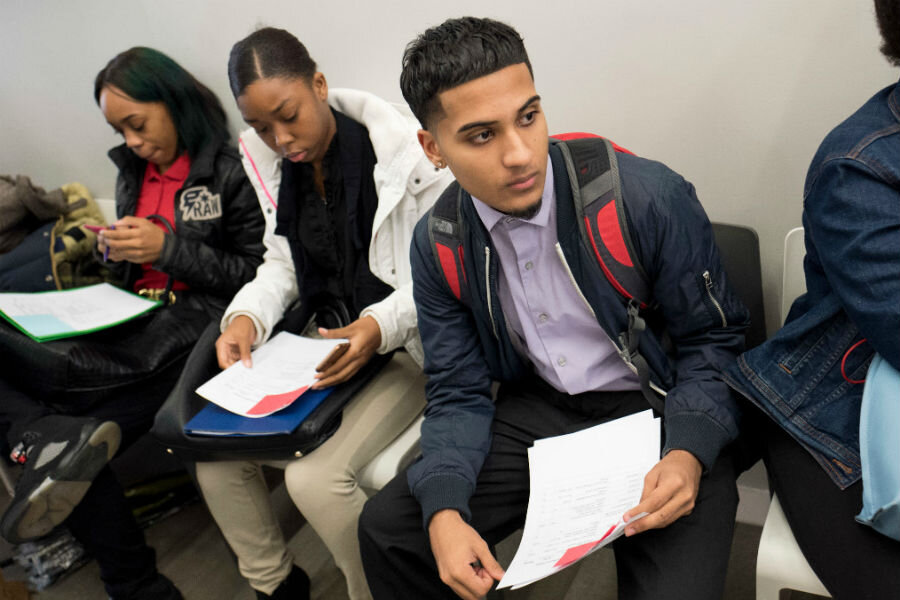Unemployment declines to nine-year low: How significant are job gains?
Loading...
The US economy received its monthly report card on Friday. Things are slowly improving, economists say, though a drop in workforce participation is responsible for some of the decline in unemployment.
Unemployment has fallen to 4.6 percent, its lowest level since August 2007, the Department of Labor reported. The rise in employment involved gains across various sectors of the economy: construction added almost 20,000 jobs, health care or social assistance jobs increased by 35,000, and another 63,000 professional jobs were created.
The numbers are part of a “recent run of continually positive economic data,” according to Jason Schenker, the president of Prestige Economics. The employment gains may reflect growing confidence in the economy, and are expected to prompt the Federal Reserve to raise interest rates later this month. But not all Americans are necessarily feeling these economic gains.
Though the economy added 178,000 jobs to non-farm payrolls in November, these new jobs accounted for just one-third of the drop in unemployment. The rest came as people stopped looking for jobs: more than 400,000 Americans aged out of the workforce, returned to education, or stayed home to look after dependents. (Unemployment statistics only count those people who are actively looking for work.)
A broader measure, which includes Americans who have stopped looking for work and those who have part-time jobs but are seeking full-time positions, puts the level of unemployment and underemployment at 9.3 percent.
For those who do have jobs, wage growth has been slow. Though wages are up 2.5 percent since last November, wages dropped by 0.1 percent (3 cents) compared to October. And many positions in the growing so-called gig economy do not come with the stability of traditional careers.
These trends, though they began before Barack Obama’s presidency, may have contributed to support for Donald Trump during the presidential election. President-elect Trump vowed to turn the economy around, a promise that appealed to many Americans who had dropped out of the workforce. And white men, who were a core base of support for Mr. Trump, made up a substantial proportion of those Americans who left the labor force in November.
What Trump can do remains uncertain. Some economists say his plan to increase infrastructure spending and slash taxes could increase hiring, but others are concerned about economic uncertainty that could hinder growth.
Still, economists agree there is some reason for optimism.
Though wage growth is slim, consumers have been able to spend and save more. In October, consumers saved 6 percent of their after-tax income, compared to 5.7 percent in September. The Federal Reserve will likely approve an interest rate hike when it meets later this month.
During the week of the election, the number of Americans applying for first-time unemployment benefits dropped to the lowest level since 1973. Desmond Toohey, an economics professor at the University of Delaware, told The Christian Science Monitor then that this – combined with low unemployment – signaled a strong labor market.
Not to mention that Americans themselves report feeling confident about the economy. More confident, in fact, than any time in the past nine years, the Conference Board, a global research organization, reported.
Material from the Associated Press and Reuters contributed to this report.








